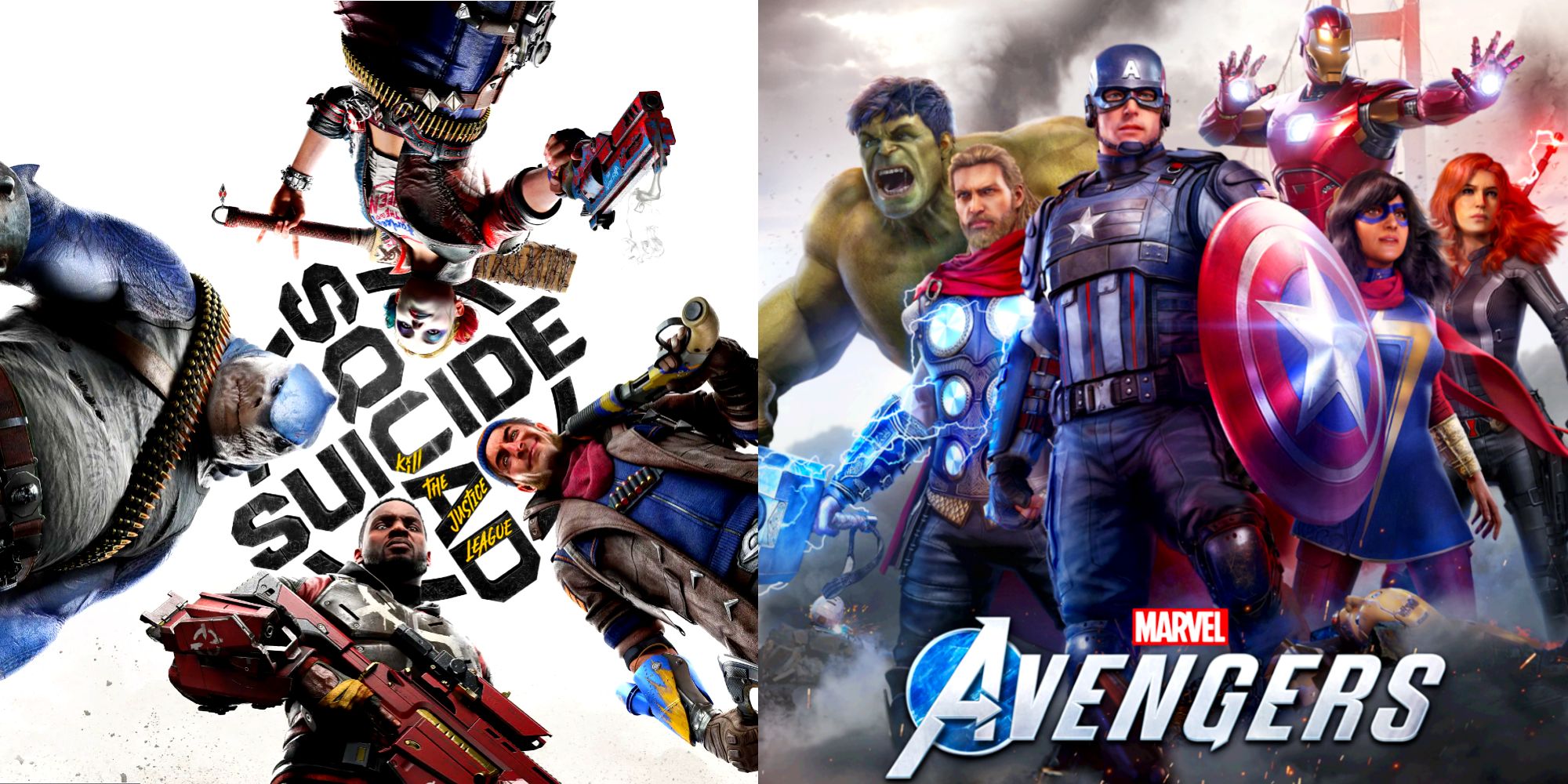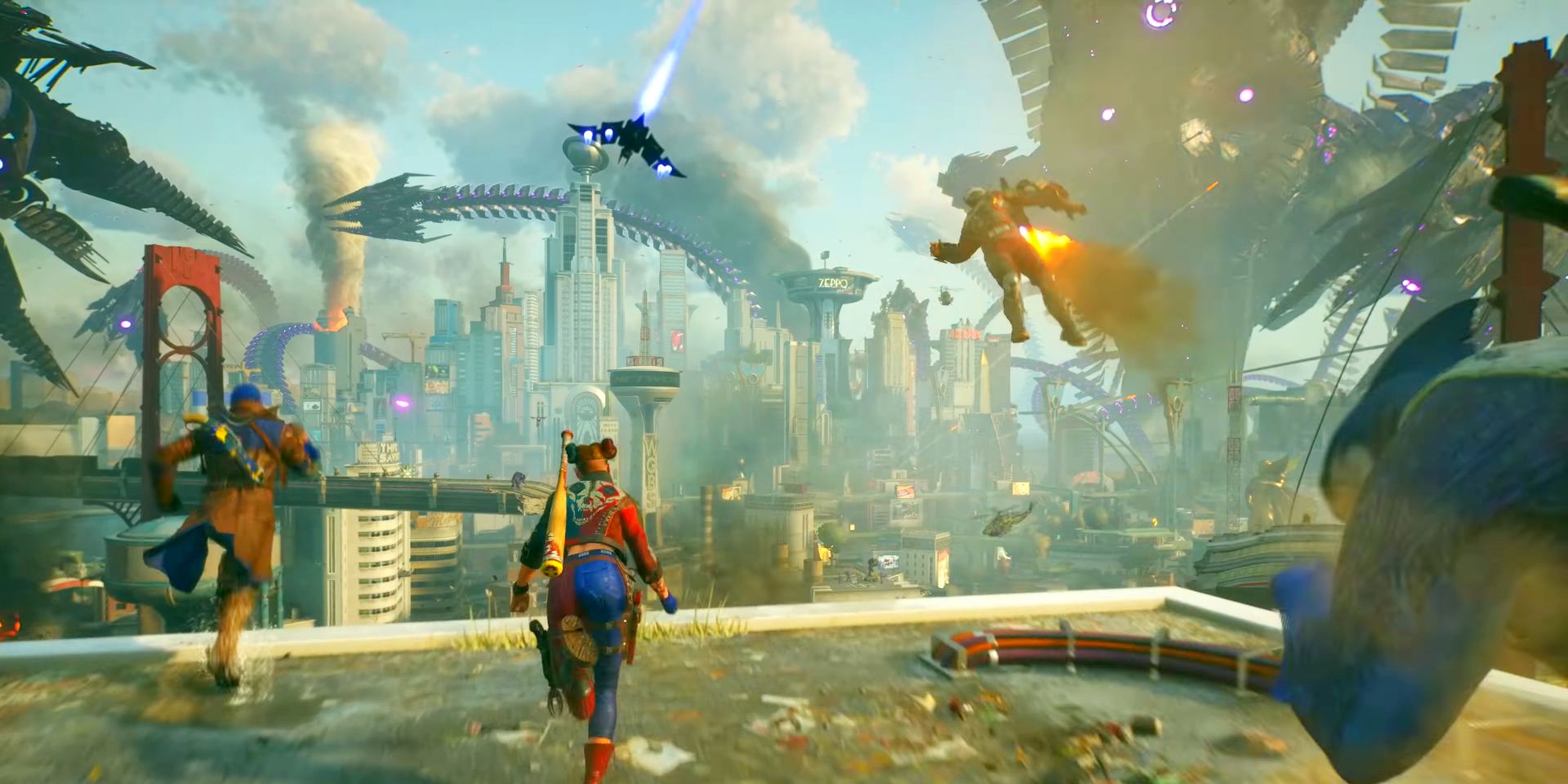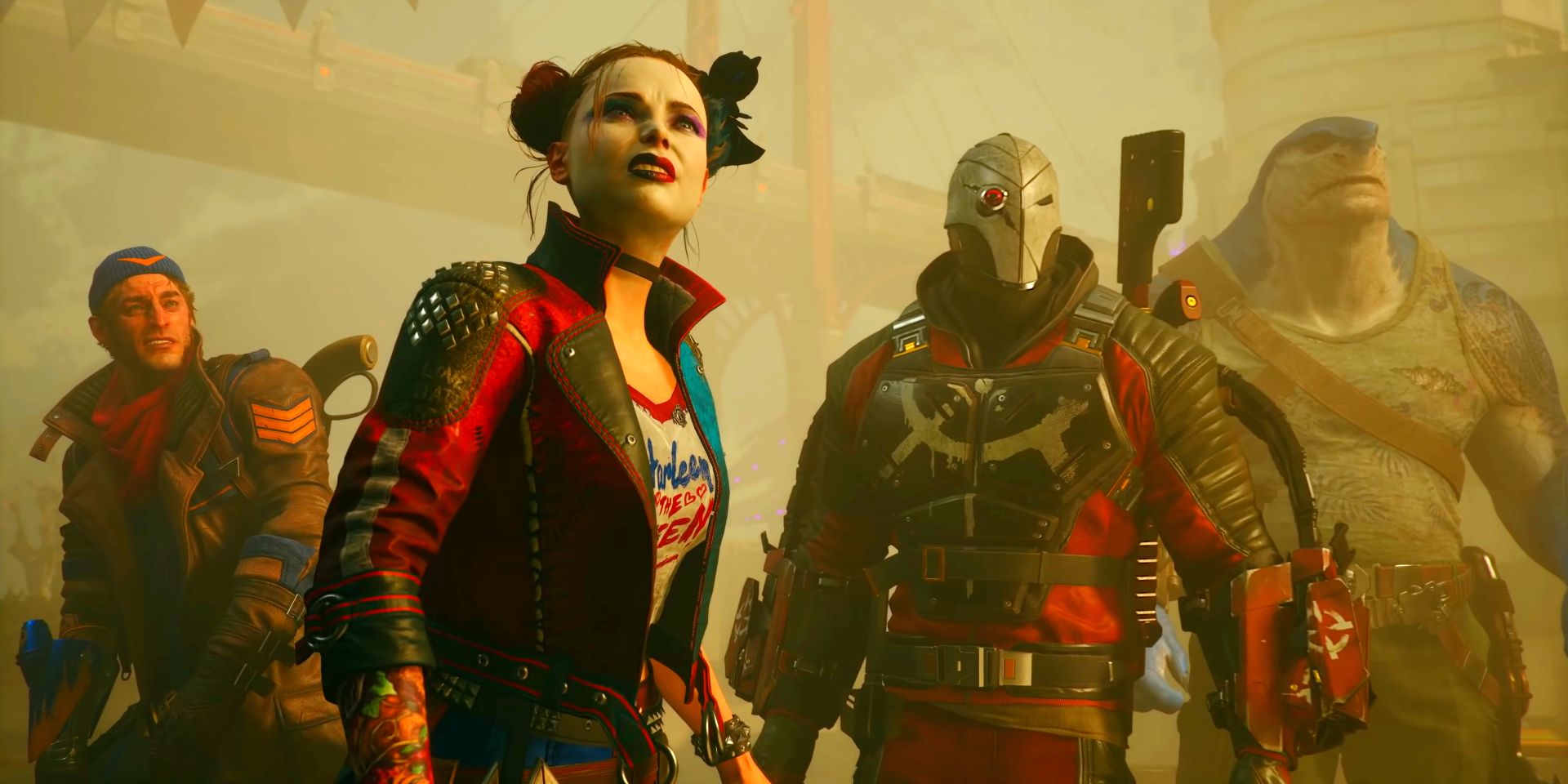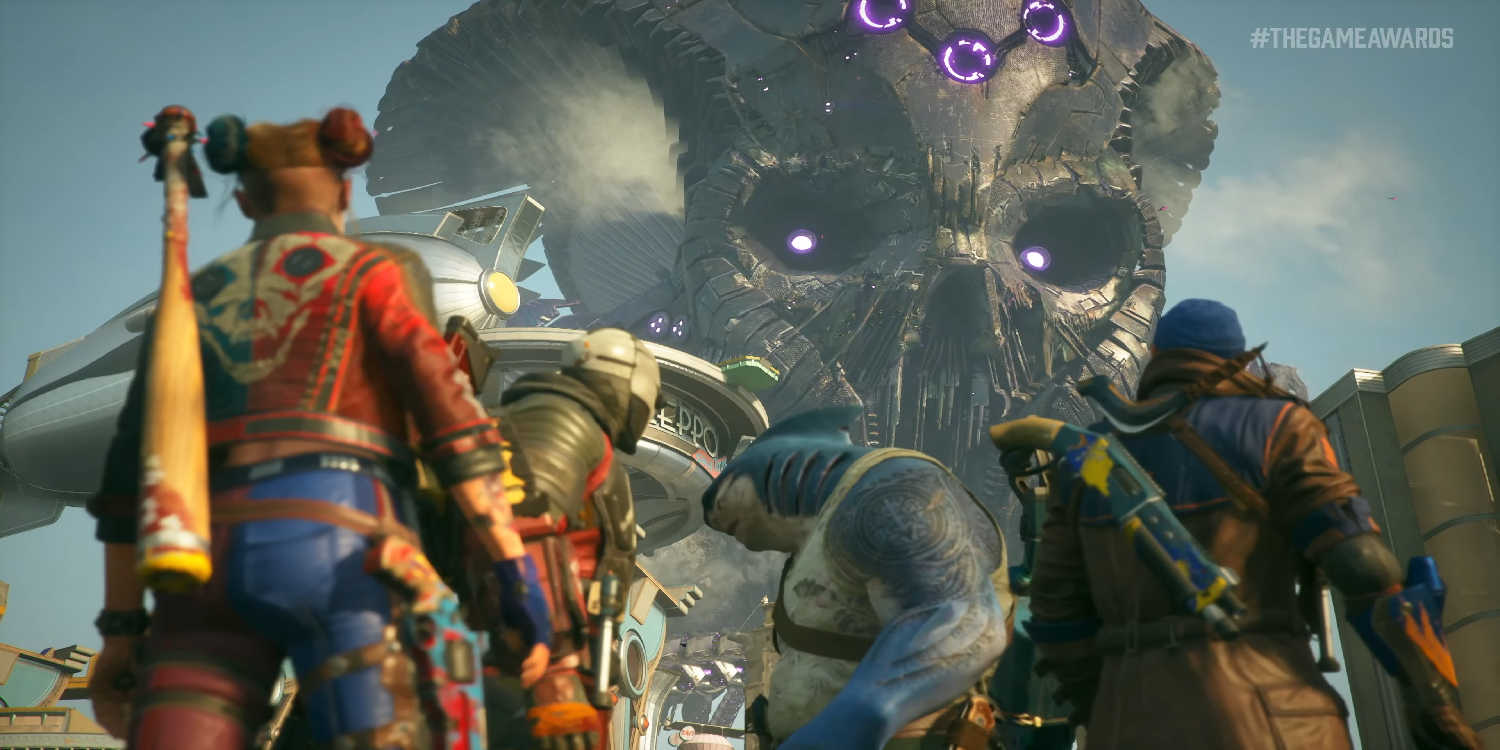Suicide Squad: Kill the Justice League is shaping up to be everything Marvel's Avengers failed to deliver. The gameplay trailer unveiled at The Game Awards 2021 shows a vibrant and dense environment, impressive visceral gameplay, and a showcase of the different roles players will take as the Suicide Squad. The official Suicide Squad: Kill the Justice League story trailer titled "Ticking" has both Rocksteady's signature look mixed with a narrative rooted in the Arkham series. Developed by Rocksteady Studios, creators of the critically acclaimed Batman: Arkham series, the game gives players control of Task Force X, aka the Suicide Squad.
The expendable villains of DC comics are sent into Metropolis to stop Brainiac's invasion and kill the brainwashed members of the Justice League. Being a video game based on the DC Comics some characters even take inspiration from the movies, with Kill the Justice League's King Shark mirroring James Gunn's rendition of the villain. This interconnectivity is already in stark contrast to the approach Marvel's Avengers took with its open-world, the cast of characters, and overall comic book experience. While the look and gameplay are similar, Suicide Squad: Kill the Justice League can correct the mistakes of Marvel's Avengers.
Suicide Squad: Kill the Justice League has the potential to accomplish where Marvel's Avengers fell short. Avengers took a broader approach to its exploration, scattering each location across the planet; Suicide Squad is content in one highly detailed and iconic place, Metropolis. Moreover, the Suicide Squad takes a more comedic approach to their mission, and the seeming closeness of each character should benefit the overall game. The narrative seems more focused and direct than Avengers, with Suicide Squad: Kill the Justice League's true villain, Brainiac, the main antagonist. However, it being a Rocksteady game, that might not be the case, but what's certain is that Suicide Squad can not only correct the issues of Marvel's Avengers but improve upon them.
Suicide Squad's Metropolis Is More Vibrant Than Marvel's Avengers' Settings
Marvel's Avengers' settings opt for multiple locations and, for the most part, are based on real places; however, the game remains vague at the names of those places. As a result, the locations are called the pacific northwest or the eastern seaboard. Putting an ambiguous catch-all name of an area rather than a specific place removes the identity and uniqueness. Even locations that are mainstays of Marvel's superheroes, New Jersey and New York, are robbed of any variety. This seemingly passed into the missions as the objectives became repetitive. This repetitiveness created a game loop that included paid consumables. Fortunately, Marvel's Avengers removed the pay-to-win items before further alienating the fanbase.
Suicide Squad: Kill the Justice League elects for Metropolis's more centralized and focused location. However, unlike Marvel's Avengers' vague locations, the setting of the Suicide Squad is iconic in its own right. As the home of Superman, the place is much more vibrant with the clustered building design similar to Insomniac Games' Sunset Overdrive. Moreover, the city's level design is Rocksteady's take on Metropolis contrasts with their other Gotham City design from the Arkham games. Unlike the locations in Marvel's Avengers, Suicide Squad: Kill the Justice League's city environment is much more iconic and unique.
Suicide Squad's Characters & Narrative Is More Concise than Marvel's Avengers
Marvel's Avengers shines in its character portrayals of the Avengers proper and Kamala Khan, Ms. Marvel. Each character has a certain depth within their narrative arc, with moments that progress their development. Unfortunately, Marvel's Avengers got wrong what Batman and Spider-Man excelled in, creating a concise and centralized narrative. Rather than the characters assembling and interacting, each character's narrative moment is relegated to a side quest or a passing conversation. Moreover, the narrative is spread throughout multiple questlines and layers of side quests. As a result, the characters lack meaningful development and adequate payoff during pivotal moments.
Suicide Squad: Kill the Justice League seemingly combines a singular narrative with the character interaction and development. As the trailers depict, the Suicide Squad is assembled with each character interaction or conflict a consequence or result of a storyline in the main narrative. Moreover, the beginning interactions of the Suicide Squad allow for more comedic moments to thrive, further fleshing out the characters. It also allows comparisons between DC properties and connections between the Suicide Squad: Kill the Justice League and Gotham Knights, despite the marketing telling otherwise. This interaction creates a narrative that already feels succinct and intimate from Marvel's Avengers.
Suicide Squad's Villains Are More Imposing than Marvel's Avengers
One of the most glaring issues with Marvel's Avengers is the lack of a clear and present threat of villains throughout the game. While AIM and MODOK were the game's primary antagonists, Monica Rappaccini took over, most of the villain's development and revelations came through cutscenes. This creates a disjointed progression when the player battles it out with the villains, like Taskmaster and Abomination; it feels more like a side quest than the main. Suicide Squad: Kill the Justice League seemingly fixes this issue in two ways: the imposing presence of the main villain and sending the Suicide Squad to kill the Justice League. In the former case, the trailer makes Brainiac an imposing feature in the landscape and the leading brainwashing cause to the latter. Turning the iconic Justice League into the main obstacle for the Suicide Squad creates a more pivotal, almost comedic task for the player. Moreover, Brainiac and the Justice League are entwined narratively, creating a more interconnected progression regarding the side and main quests.
For Suicide Squad: Kill the Justice League to succeed, it must learn from the mistakes of Marvel's Avengers. By focusing on a single setting rather than multiple locations, Suicide Squad has the opportunity to create a unique take on an iconic place in DC Comics. Likewise, creating a concise and intimate narrative allows the story to flow organically and opens the chance for character interactions and player comparisons on how Rocksteady's Batman: Arkham connects to Kill the Justice League. Moreover, the game's antagonists contribute to the overall narrative by their inclusion and reflection in the environment.
Marvel's Avengers completed what the game sought to do, allowing players to role play as Earth's Mightiest Heroes despite the missteps. Since then, the base game has improved with item reworks and story expansions, but the game's biggest blunder was the lack of content post-launch. Only time can tell whether Suicide Squad: Kill the Justice League will live up to the expectations or repeat the same issues as Marvel's Avengers.




